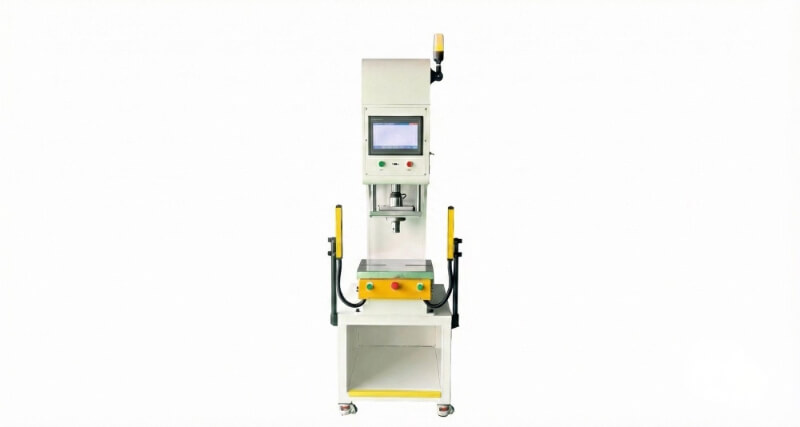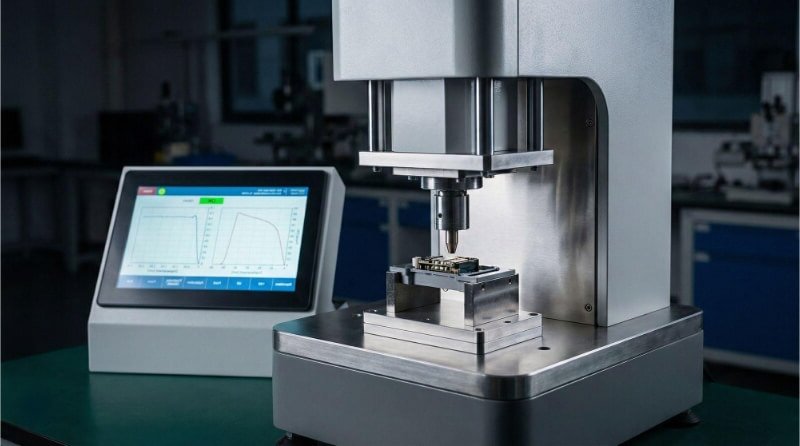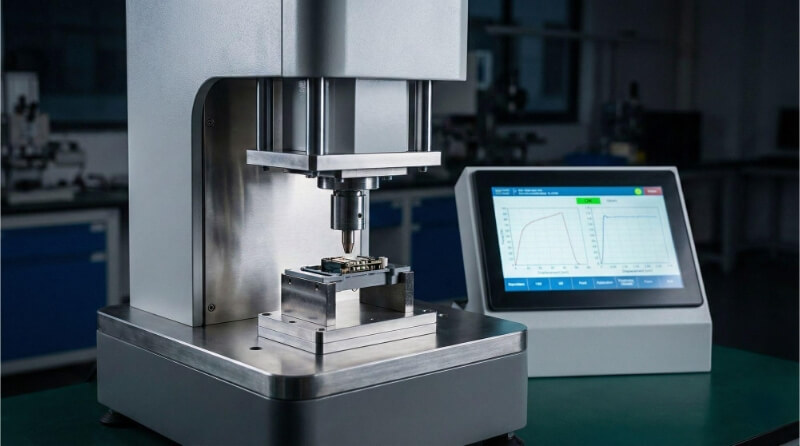Золото - один из самых популярных металлов в мире. Люди используют его в ювелирных изделиях, электронике и даже космическом оборудовании. Однако некоторые до сих пор беспокоятся о том, может ли оно ржаветь или корродировать. Это опасение вполне логично - никто не хочет, чтобы золотое кольцо или коннектор позеленели или сломались. В этой статье мы расскажем о том, как золото ведет себя со временем. Вы узнаете, почему оно остается блестящим, что на него влияет и когда могут начаться изменения.
Устойчивость золота к ржавчине делает его уникальным материалом. Однако это еще не все - давайте посмотрим, что делает золото таким устойчивым и когда оно может проявить признаки износа.
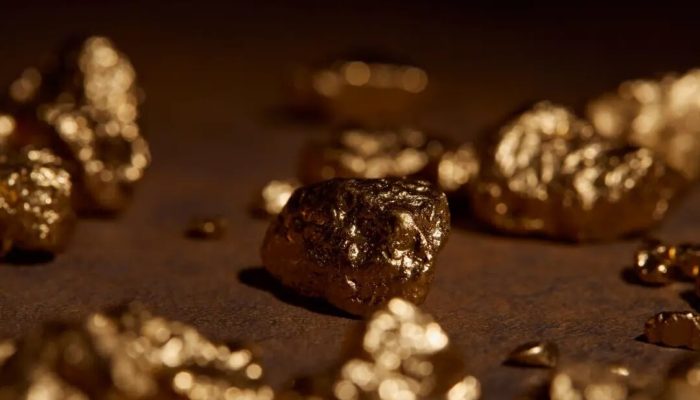
Что такое золото?
Золото - это мягкий желтый металл, встречающийся в земле. Оно известно своим цветом, весом и блеском. Золото - один из немногих металлов, который выглядит ярким и желтым, не нуждаясь в обработке поверхности. Тысячи лет его использовали для изготовления монет, ювелирных изделий и предметов искусства.
Золото также очень плотное. Ему легко придавать форму, растягивать и прессовать без образования трещин. Благодаря этому производители могут формировать из него тонкие листы или проволоку для сложных работ.
Золото добывается из природных источников. По сравнению с другими металлами оно не нуждается в аффинаже. Кроме того, оно остается чистым во многих формах, что облегчает его переработку и повторное использование.
Химические характеристики, которые делают золото уникальным
Золото не вступает в реакцию с кислородом. Оно не смешивается с кислотами и водой. Поэтому золото сохраняется даже на открытом воздухе или в соленой среде. Оно входит в группу, называемую "благородными металлами". Эти металлы известны тем, что остаются стабильными в течение долгого времени.
На поверхности золота не образуется ржавчина или оксидные слои. На поверхности других металлов образуется пленка, которая разрушает их поверхность. Золото остается чистым и ярким. Золото также не притягивает электроны. Это делает его пригодным для использования в электронике, где требуются стабильные сигналы.
Ржавеет ли золото?
Нет, золото не ржавеет. Золото - благородный металл. Это означает, что оно не вступает в реакцию с воздухом, водой и большинством химических веществ. Поэтому чистое золото не ржавеет, не подвергается коррозии и не потускнеет в обычных условиях. Однако сплавы золота могут вести себя по-разному в зависимости от металлов, с которыми они смешаны.
Положение золота в ряду реакционных элементов
Золото находится в самом низу ряда реакционной способности металлов. В этом списке металлы ранжируются в зависимости от их реакционной способности по отношению к другим веществам, таким как кислород или вода.
Металлы, находящиеся в верхней части периодической таблицы, такие как натрий или железо, быстро вступают в реакцию. В обычных условиях они ржавеют, ржавеют или тускнеют. Золото, напротив, остается стабильным. Оно не соединяется с кислородом даже с течением времени.
Благодаря своей низкой реакционной способности золото не образует ржавчины. Ржавчина образуется, когда металл вступает в реакцию с кислородом и водой. Поскольку золото не поддается ни тому, ни другому, ржавчина не образуется.
Инертная природа чистого золота
Золото - инертный металл. Это значит, что оно не вступает в реакцию с большинством окружающих его предметов. Чистое золото не меняет цвет, не трескается и не расслаивается даже под воздействием химических веществ.
Именно поэтому золото часто используется в лабораторных инструментах, медицинских приборах и электронике. Оно остается чистым и сохраняет свою структуру даже после длительного использования.
Инертность золота также означает, что оно не нуждается в защите. покрытия или отделка. Она остается блестящей сама по себе.
Поведение золота в воздухе и воде
Чистое золото остается неизменным в воздухе и воде. Оно не образует оксидов, как медь, и не ржавеет, как железо. Вы можете оставить золото на воздухе или в воде на долгие годы и не заметить его разрушения.
Даже в соленой воде золото остается неизменным. Именно поэтому его используют в морских деталях и в условиях повышенной влажности.
Это делает золото одним из самых надежных металлов для длительного использования в изделиях, подверженных воздействию воздуха и влаги.
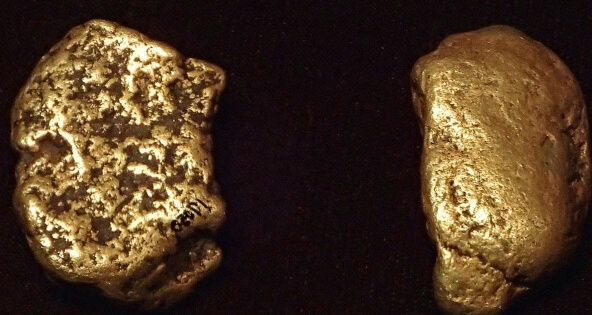
Корродирует ли золото или потускнеет?
Золото славится тем, что сохраняет свой внешний вид и прочность даже после длительного использования. Чтобы понять, почему оно не ржавеет и не тускнеет, как другие металлы, давайте разберемся в этом наглядно.
Понимание коррозии благородных металлов
Коррозия происходит, когда металл разрушается после реакции с окружающей средой, обычно с кислородом, кислотами или солями. Большинство металлов образуют на поверхности слой оксида или других соединений. Это со временем ослабляет металл.
Но благородные металлы, такие как золото, платина и серебро, противостоят коррозии. Эти металлы не вступают в легкие реакции. Золото, в частности, очень стабильно. Оно остается неизменным в воздухе, воде и многих химических веществах.
Поэтому чистое золото не ржавеет. Оно не теряет своей поверхности и не становится чешуйчатым, как железо.
Почему золото не потускнеет, как серебро или медь?
Потускнение - это поверхностный слой, который образуется, когда металлы вступают в реакцию с серой или кислородом воздуха. Серебро темнеет из-за серы. Медь становится зеленой из-за окисления.
Золото не вступает в такие реакции. В обычных условиях оно не образует сульфидов или оксидов. Вот почему золотые украшения остаются блестящими без полировки.
В отличие от серебра или меди, золото не образует пленки, скрывающей его цвет. Даже после многих лет носки чистое золото сохраняет свой яркий вид.
Факторы окружающей среды, которые могут повлиять на внешний вид поверхности
Чистое золото стабильно, но то, что вы видите на его поверхности, иногда может меняться.
Золото, используемое в ювелирных изделиях, часто сплавляют с другими металлами, такими как медь или серебро. Эти металлы могут потускнеть. Так, сплав золота может со временем потемнеть или покрыться пятнами, но причиной этого является не само золото.
Кроме того, на золоте может скапливаться грязь, масло или химические вещества, содержащиеся в воздухе. Это не означает, что золото подверглось коррозии. Оно просто нуждается в очистке.
В редких промышленных условиях с сильными кислотами или высокими температурами даже золото может слегка потускнеть. Но оно не ржавеет и не разрушается. Поверхность остается твердой, и любые изменения обычно носят косметический характер.
Признаки износа золотых украшений
Золотые украшения хорошо держатся, но они все равно подвергаются ежедневному трению, контакту и загрязнению. Многие люди путают нормальный износ с реальным повреждением. Давайте посмотрим, что происходит.
Поверхностное потускнение против настоящей ржавчины
Золото не ржавеет. Однако со временем оно может потерять часть своего блеска. Это не коррозия. Это просто слой грязи, масла или мелкие царапины, которые не дают свету отражаться.
Быстрая полировка может вернуть блеск. Под ним нет глубоких повреждений. В отличие от ржавчины, потускнение золота не ослабляет металл.
Царапины, обесцвечивание и остатки
Золото, особенно сплавы с низким содержанием карата, может поцарапаться при регулярном использовании. Это нормально для более мягких металлов.
Обесцвечивание может произойти, если сплав содержит медь или серебро. Эти металлы вступают в реакцию с потом, воздухом или бытовыми средствами. Вы можете заметить зеленые или черные следы на коже или украшениях.
Остатки могут образовываться от лосьонов, мыла или пыли. Он прилипает к поверхности, не повреждая золото. Обычно его можно удалить мягким чистящим средством.
Заблуждения о порче золотых украшений
Многие думают, что золото ржавеет, когда оно темнеет или становится шершавым на ощупь. В большинстве случаев это реакция других металлов в сплаве, а не самого золота.
Некоторые также считают, что золото "портится", если на нем появляются царапины или изгибы. Чистое золото мягкое, поэтому небольшие царапины вполне ожидаемы. Поэтому в него добавляют более твердые металлы, чтобы сбалансировать мягкость и прочность.
При правильном уходе золотые украшения могут прослужить десятилетия без серьезных повреждений. То, что кажется коррозией, часто является поверхностным и легко устраняется.
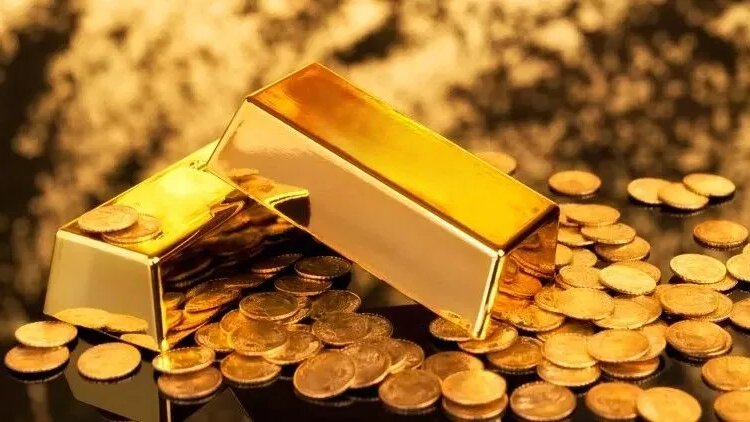
Как проверить, чисто ли ваше золото?
Знание того, что ваше золото настоящее и чистое, поможет вам избежать таких проблем, как обесцвечивание или потеря стоимости. Вот несколько простых способов проверить качество золота.
Магнитный тест и Кислотный тест
Магнитный тест: Золото не магнитится. Если ваш предмет прилипает к магниту, скорее всего, он содержит железо или другой неблагородный металл. Это быстрый способ выявить подделку.
Кислотный тест: Ювелиры часто используют кислоту для проверки чистоты золота. Каплю кислоты помещают на поверхность. По реакции - или ее отсутствию - можно судить о содержании золота. Настоящее золото не вступает в реакцию, в то время как низкопробные металлы обесцвечиваются или слегка растворяются.
Эти тесты просты, но с кислотными наборами следует обращаться осторожно.
Система карат и маркировка
Чистота золота измеряется в каратах. Чем выше число, тем больше золота в изделии:
- 24K = чистое золото
- 18K = золото 75%
- 14K = 58,5% золота
- 10K = 41,7% золота
На большинстве золотых изделий стоит клеймо, например "18K" или "750" (что означает 75%). Ищите их на внутренней стороне колец или застежек на цепочках. На подделках клейма могут отсутствовать или использоваться фальшивые.
Профессиональные методы оценки
Для более детальной проверки ювелир может провести расширенные тесты:
- Рентгеновская флуоресценция (XRF): Проверяет содержание золота, не повреждая изделие.
- Электронные тестеры: Используйте зонды для определения чистоты золота.
Эти методы являются быстрыми и более точными, чем домашние тесты. Они также помогают выявить многослойное или плакированное золото, которое может выглядеть подлинным, но содержать очень мало настоящего золота.
Предотвращение повреждения золотых изделий
Золото служит долго, но за ним все равно нужно ухаживать. Ежедневные привычки и неправильно подобранные чистящие средства могут привести его в негодность. Вот как сохранить золото новым.
Лучшие практики уборки и хранения
Очистите золото мягким мылом и теплой водой. Для удаления загрязнений используйте мягкую ткань или щетку. Избегайте сильных ударов.
Перед хранением тщательно просушите изделия. Храните золото в мягком мешочке или коробке с тканевой подкладкой, чтобы предотвратить появление царапин. Храните изделия отдельно друг от друга, чтобы они не терлись друг о друга.
Не используйте зубную пасту, пищевую соду или грубые тряпки - они могут поцарапать поверхность.
Избегайте контакта с агрессивными химическими веществами
Держите золото подальше от хлора, отбеливателей и чистящих средств. Они могут повредить сплавы или потускнить поверхность.
Даже такие повседневные средства, как духи, лосьоны и лаки для волос, могут накапливаться на золоте. Наносите эти средства до, а не после ношения украшений.
В бассейнах и горячих ваннах снимайте украшения. Хлор может повлиять на смесь металлов и ослабить некоторые золотые сплавы.
Когда снимать золотые украшения?
Снимайте золотые изделия во время тяжелой работы, занятий в спортзале или на открытом воздухе. Это предотвратит появление вмятин, изгибов или глубоких царапин. Также снимайте золото перед сном, чтобы избежать случайных повреждений.
Если вы занимаетесь домашними делами, работаете с инструментами или плаваете, лучше снять золотые украшения, чтобы защитить их отделку и форму.
Золото в суровых условиях
Золото отлично держится даже в экстремальных условиях. Именно поэтому его используют в тех отраслях, где большинство металлов не справляется. Давайте посмотрим, как оно работает в этих условиях.
Золото в морских и промышленных условиях
Соленая вода, химикаты и высокая влажность могут привести к разрушению многих металлов. Но золото остается стабильным.
В морской среде золото устойчиво к воздействию соли и влаги. Оно не ржавеет, как сталь или алюминий. Поэтому его иногда используют в разъемах, покрытиях или уплотнениях дорогостоящих деталей.
В промышленных условиях золото может выдерживать воздействие кислот, газов и высокой температуры. Оно не меняет форму и не теряет прочность поверхности. Его используют в инструментах и покрытиях, которые должны выдерживать длительные нагрузки.
Коррозионная стойкость в электронике
Электронике нужны металлы, которые не выходят из строя со временем. Золото - идеальный вариант, поскольку оно противостоит окислению, сохраняя четкость сигналов.
Оно используется на контактных площадках, печатных платах и разъемах. Даже при высокой температуре, влажности и многократном использовании золото остается чистым и проводящим.
Такая надежность помогает предотвратить потерю сигнала, короткое замыкание и выход из строя изделий, особенно в аэрокосмических, медицинских и оборонных системах.
Долговечность изделий с золотым напылением
Позолоченные изделия имеют тонкий слой золота, нанесенный на другой металл, например медь или латунь. Несмотря на то что они кажутся цельным золотом, они быстрее изнашиваются.
Со временем основной металл может просвечивать. Если слой золота тонкий, он может стираться при ежедневном использовании. Воздействие пота, воды или трения ускоряет этот процесс.
Плакированные изделия лучше всего подходят для периодического ношения. Они требуют бережной чистки и хранения, чтобы замедлить износ и дольше сохранить свой внешний вид.
Заключение
Золото не ржавеет. Чистое золото - благородный металл, который противостоит коррозии, потускнению и окислению. Оно остается стабильным в воздухе, воде и даже в агрессивных средах. Однако сплавы золота или позолоченные изделия могут со временем изнашиваться или менять поверхность из-за присутствия других металлов. При правильном уходе золото сохраняет свой блеск и прочность на долгие годы.
Вам нужны металлические детали, которые не ржавеют и служат долго? Мы предлагаем индивидуальные решения с использованием высокоэффективных материалов, включая золото и другие коррозионностойкие металлы. Свяжитесь с нами сейчас чтобы получить быстрое предложение или консультацию специалиста.
Привет, я Кевин Ли

Последние 10 лет я занимался различными формами изготовления листового металла и делился здесь интересными идеями из своего опыта работы в различных мастерских.
Связаться

Кевин Ли
У меня более десяти лет профессионального опыта в производстве листового металла, специализирующегося на лазерной резке, гибке, сварке и методах обработки поверхности. Как технический директор Shengen, я стремлюсь решать сложные производственные задачи и внедрять инновации и качество в каждом проекте.

